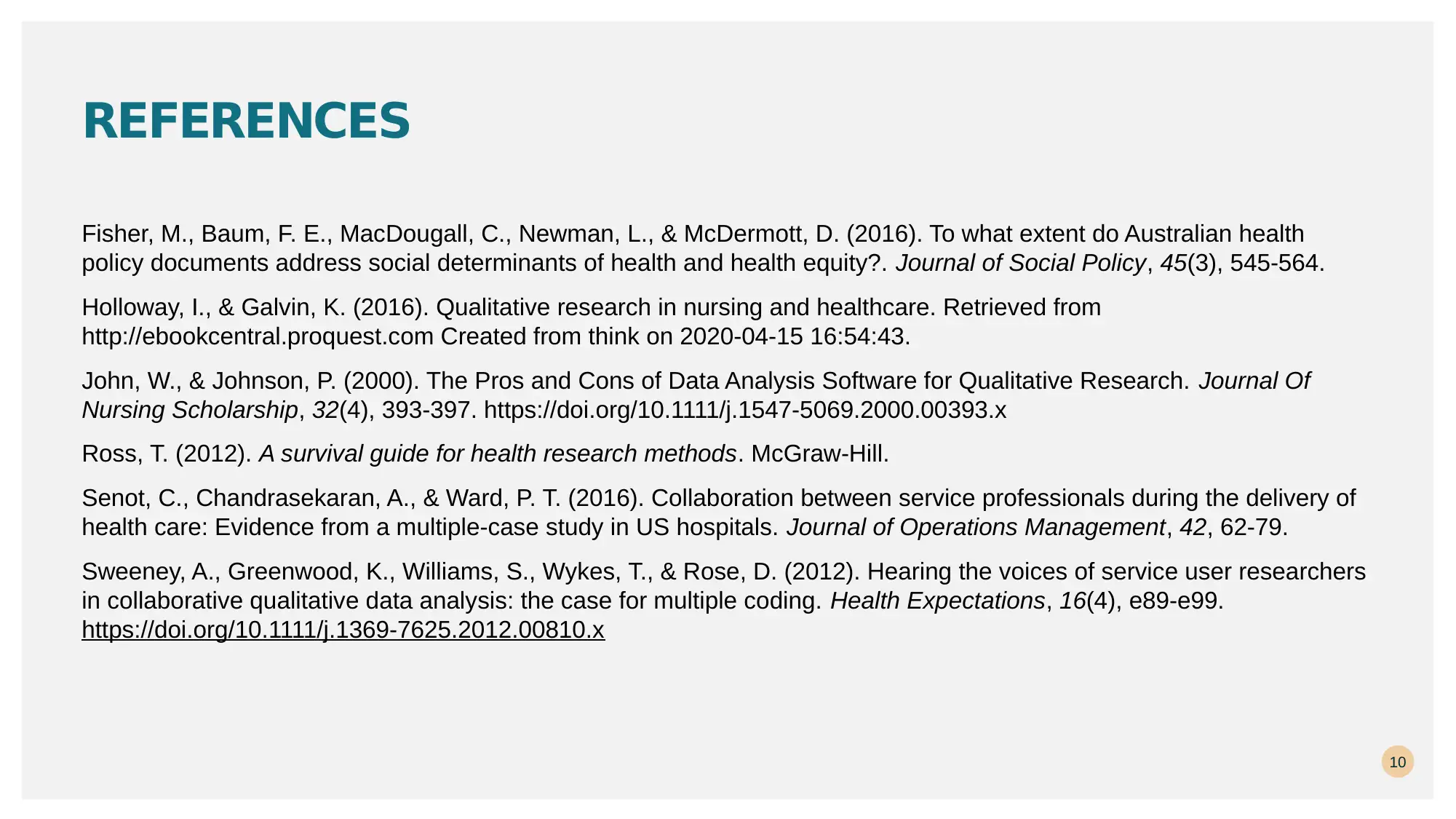Presentation on Qualitative Research in Healthcare: PUBH6013
VerifiedAdded on 2022/09/24
|10
|447
|21
Presentation
AI Summary
This presentation provides an overview of qualitative research methods applied in healthcare settings. It begins with an introduction highlighting the significance of support functions in healthcare, followed by a discussion on the nature of data used, including primary and secondary research. The presentation outlines the data collection methods, emphasizing the use of interpretivism as the research philosophy. It also addresses ethical and cultural considerations, underscoring the importance of informed consent and avoiding plagiarism. The presentation details data sources such as scholarly articles, interviews, focus groups, and observations, along with sampling techniques. The content is supported by references to relevant academic sources. The presentation is designed to fulfill the assessment criteria, which includes demonstrating the ability to apply qualitative research methods, appreciate ethical and cultural considerations, and understand sampling techniques.
1 out of 10

















![[object Object]](/_next/static/media/star-bottom.7253800d.svg)